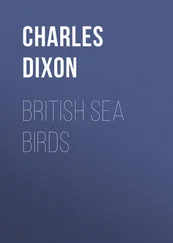Sooty tern , in Pacific c .166,950 on Laysan Island (Dill & Bryan, 1912); in Indian Ocean over 25,000 in 1937 on Goelette, c .65,000 on Bird Island (Seychelles), c .5 million in 1931 and at least ¼ million in 1937 on Desnoeufs (D. Vesey-Fitzgerald, 1941); in U.S.A. (breeds Dry Tortugas only) c .7000 in 1903, 9,000 in 1907, 10,000 in 1908, 9,000 in 1917, 15,000 in 1935, 20,000 in 1936, 50,000 in 1937, 32,029 in 1938, 35,000 in 1939, c .50,000 in 1940, over 50,000 in 1941, 32,500 in 1942, 54,500 in 1945, 48,600 in 1946, 32,135 in 1947 (P. Bartsch, 1919; A. Sprunt, 1948).
Sandwich tern, c .40,000 in Holland in 1940 (van Ijzendoorn, 1950); this perhaps four-fifths of whole population of north-west Europe; other occupied countries, all with very fluctuating numbers, Sweden (200–300 nests in early ’forties), Germany (3,957 in 1940), Denmark (unknown number), the British Isles (fluctuating between two and five thousand nests, and about 3,500 in early ’forties, J. F. from literature and notes), and Danzig, Brittany and Portugal (a few each).
Noddy , in U.S.A. 200 in 1903, 2,000 in 1907, 700 in 1908, 2,000 in 1917; 1,500 in 1935, 2,000 in 1936, 1,000 in 1937, 206 in 1938, 125 in 1939, 90 in 1940, 500 in 1941, 225 in 1942, 375 in 1945, 275 in 1946, 125 in 1947 (as sooty tern).
Little auk , in Iceland, now breeds Grimsey only, where c .50 in 1820, 150–200 in 1903, c .20 birds in 1934, at least 19 birds in 1949 ( see here.)
Razorbill , 12 in Germany in 1939 (Schulz), all on Heligoland; 318 in Denmark in 1939 (Salomonsen, 1943), all on Græsholm, where 60 pairs in 1944 (K. Paludan, 1947). Peters and Burleigh (1951) suggest that there may not be more than 450 in Newfoundland.
Common guillemot, c .25,000 pairs in Sweden in early nineteen-forties (F. Salomonsen, 1944), nearly all on Störa Karlsö, where only 10 in 1880, c .1,250 in 1918; in Denmark established Græsholm in 1928, c .60 in 1936, 100 in 1938, 122 in 1939, 127 in 1940, 208 in 1941, 158 in 1942 (Salomonsen, 1943, 1943b); c .200 in c .1946 (P. Jespersen, 1946); in Germany c .2,000 all on Heligoland (Schulz and ourselves). Peters and Burleigh (1951) suggest that there may not have been many more than 25,650 in 1941–45 in the whole of Newfoundland, but it seems clear that the total west Atlantic common guillemot population is at least 40,000, of which there are about 7,700 in Quebec Labrador (R. A. Johnson, 1940), c. 10,000 on Anticosti Island (H. F. Lewis, 1941c.), and perhaps 500 on Bonaventure Island in Quebec and 700 on the Bird Rocks in the Magdalen Islands (A. C. Bent, 1919).
Brünnich’s guillemot, c. 2 million in Greenland (Salomonsen, 1951).
Black guillemot, c .250 in Maine in 1948 (Palmer); 3 in England in 1940 (Cumberland; Blezard and others, 1943).
Atlantic puffin , world population 1952, not less than 7,612,500, of which 2,500,000 each Iceland, Faeroes; 2,000,000 Brit. Is. (J.F. thinks this an under-estimate); 62,500 France, Channel Is. (R.M.L., 1953).
Though this list includes some very small numbers of sea-birds breeding in some countries and lands desultorily, or at the very edge of their range, there have been some big censuses; and of five North Atlantic sea-birds, Tristan great shearwater, cahow, American white pelican, gannet and puffin, we have estimates of the world population.
We must again remind readers that the figures do not refer to birds (unless this is particularly pointed out); but to occupied nests or breeding ‘pairs.’
Not many of the censuses made so far are of the species with very large populations. Indeed, if we were to judge solely from completed censuses, we might come to the conclusion that the populations of sea-birds were not high. In fact, they are often extremely high. “The Fulmar Petrel lays but one egg,” wrote Darwin in The Origin of Species , “yet it is believed to be the most numerous bird in the world.” We now know (Fisher, 1952) that, while there may be over two million, there are under ten million fulmars in the world, and that, far from being the most numerous bird, the fulmar is less numerous than many sea-birds, and even some land-birds. One of us has already suggested (Fisher, 1940) that “the most abundant bird in the world is certainly a sea-bird, and probably Wilson’s petrel,” and nothing discovered in the last ten years has encouraged him to change that view. Nevertheless, many species of sea-birds are astonishingly abundant, and quite a number of North Atlantic species, if not vastly numerous in the Atlantic proper, certainly darken the sky round their arctic breeding-haunts just as Wilson’s petrels darken some antarctic skies. The miles of cliffs round Bear Island (especially at its south end) harbour millions (an unknown number of millions) of Brünnich’s and common guillemots. Some of the buttresses rise fourteen hundred feet sheer from the sea, and, as Bertram and Lack say, “have been described with justice as the finest bird-cliffs in the Northern Hemisphere.” However, those of St. Kilda are (in one place) also fourteen hundred feet high, and are more varied, with a better-known history. Those who have seen both may think St. Kilda finer, though Bear Island has more birds and is more magnificently sinister. It certainly has a higher sea-bird population than any comparable place in the North Atlantic-Arctic; though it seems to have competitors in the Pribilov, Aleutian and Kurile Islands and other parts of the North Pacific. But there are many great bird-stations besides Bear Island and St. Kilda, where the observer may behold a community of a million birds or more. On the basalt cliffs of the Faeroes, particularly north-west Streymoy, he may find this number. Perhaps nowhere in Iceland is there a cliff-site with a million birds, but there are many rocks with many thousands, from the Westmann Isles in the south to Grímsey in the north; from Latrabjarg in the west to Skruður and Papey in the east. Jan Mayen has at least a million sea-birds; and there may well be millions at more than several places in Spitsbergen; perhaps on the hills of Horn Sound, Cloven Cliff off the north-west, Magdalena Bay and Brandy Bay in North-east Land; almost certainly on the Vogel Hoek of Prince Charles Foreland, the great auk hill of Advent Bay, and the dolerite Alkrange of Hinlopen Strait. A pioneer ecologist and student of animal numbers (Elton in Longstaff, 1924) wrote of the Alkrange:—
“It is impossible to describe the multitudes of the Guillemots on the bird cliffs. The place was teeming with them: literally hundreds of thousands. The cliffs are made of columnar dolerite which weathers into pinnacles and which rise several hundred feet sheer out of the sea. On the numerous narrow ledges the birds were so crowded that there was room for no more. The rows of black and white birds rising in tiers up to near the top, and the ghostly noise of the combined twitter made by them, made it seem as if one was in a vast opera house, packed with crowds of people in white shirt-fronts and black tails, all whispering comments on each other and rustling their programmes.”
It seems clear that either the little auk or Brünnich’s guillemot is the most abundant bird of the north. It is hard to decide which; the little auk colonies are perhaps fewer, and certainly less obvious as dense loomeries, because the birds nest in crevices and not on flat open ledges. But the dark cloud of circling, twittering dovekies betrays their density, and we believe with Salomonsen that their actual numbers are greater. Nevertheless, some Brünnich’s guillemot loomeries are vast, and those at Bear Island, Jan Mayen and Spitsbergen are not the only ones that are stupendous. The largest loomery in the U.S.S.R. is probably that at Bezymiannaya Bay in Novaya Zemlya, where S. K. Krasovskii (1937) has estimated that about 1,600,000 Brünnich’s guillemots (birds, not pairs) nest. But Salomonsen (1944) has estimated that in 1936 over two million Brünnich’s guillemots (birds) bred at the rock Agparssuit (Cape Shackleton), north of Upernavik in West Greenland. This was about half the population of this species in Greenland. There are many other huge bird rocks in Davis Strait and Baffin’s Bay; in West Greenland several on Disko Island, in Umanaq Fjord (notably Sagdleq, which may have a million Brünnich’s) and in the Upernavik district (notably Qaerssorsuaq, or Sanderson’s Hope, where the guillemot cliff is at least three miles long and over three thousand feet high and has two hundred thousand Brünnich’s), and several in the Thule district in the far north-west, notably Saunders and Hakluyt Islands, and Cape York, which contains what is probably the largest little aukery in the world; * nobody has been able to guess how many millions nest there.
Читать дальше












